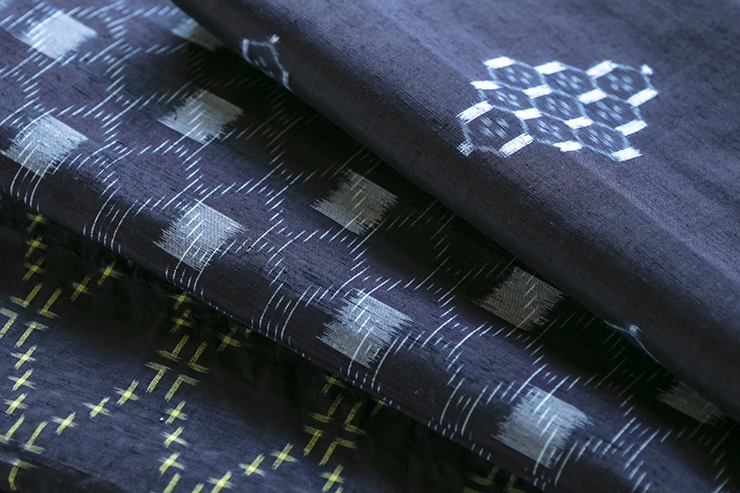
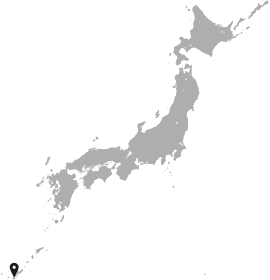 Kasuri is the weaving technique that utilizes the un-dyed parts of the tie-dyed strings and makes patterns by combining the colored and white parts. It is universally referred to as ikat, meaning, “to bind” in Indonesian. The technique originates in India, and is believed to have brought into Okinawa via Kume-jima Island, which was the relay station for trading during the Ryukyu Kingdom period.
Kasuri is the weaving technique that utilizes the un-dyed parts of the tie-dyed strings and makes patterns by combining the colored and white parts. It is universally referred to as ikat, meaning, “to bind” in Indonesian. The technique originates in India, and is believed to have brought into Okinawa via Kume-jima Island, which was the relay station for trading during the Ryukyu Kingdom period.
The culture of kasuri spread from the Southeast Asia and over the Middle East Iran and Syria, all the way to France and Spain in the west and to Peru and Guatemala in the East beyond the ocean.
Ryukyu Kasuri, like other dyed textiles in Okinawa, was woven as official cloth dedicated to the royal government. It was after the dissolution of the Kingdom when ordinary people were allowed to wear them. The patterns and colors of kasuri used to be designated based on the social rank.
Most of Ryukyu Kasuri was woven in the town of Haebaru, adjoining the city of Shuri, located in the south of Okinawa’s main island. Being the area under direct control of the royal government, many weavers lived in the town of Haebaru. Close to forty shops are still located in town today, and close to 200 people are being involved in the weaving industry.
Three methods of weaving are combined in the Ryukyu Kasuri: tate-kasuri (literally, ‘vertical kasuri’) makes the kasuri pattern with warps, while yoko-kasuri (‘horizontal kasuri’) does with wefts, and tateyoko-kasuri uses both. The unique method is completely different from weavings seen in either Japan or the Southeast Asia, and gives somewhat floating-like feel to the textile.
The patterns woven in take design motifs from birds, flowers and other animals and plants, objects in the sky such as stars and clouds, or daily commodities such as scissors or coins, and the variation counts up to six or seven hundreds. They are referred to with Okinawan dialects such as tuigwaa or toni, and include subjects taken from the daily life in the tropical island, including humorous ones such as dog’s footprints, pig’s feed tray or human eyebrows, all of which bring smiles to viewers' faces. Such patterns are combined and woven into a piece of cloth.
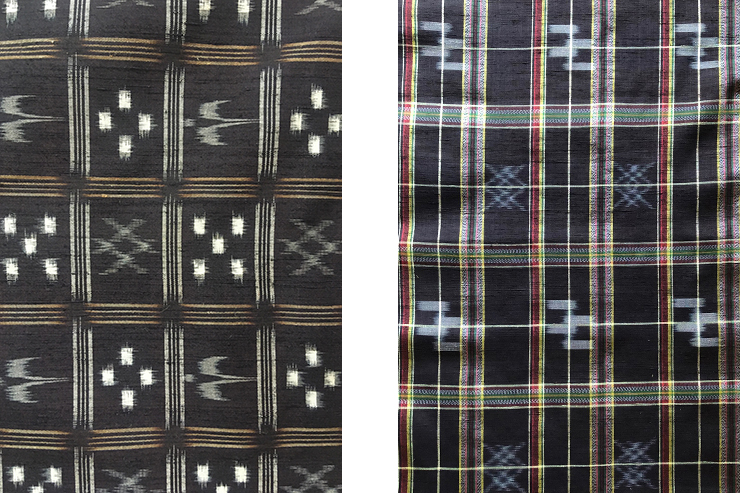
During the Ryukyu Kingdom period, the orders form the royal government were usually placed through the “Royal Design Collection,” which described in details the designs and colors that ought to be used in the kasuri pattern. They were what may be called the design drawings today. If the product had even the slightest difference from the drawing, not only the weavers but also the leader of the village and supervising officials were punished. After the dissolution of the Kingdom in the Meiji era, Ryukyu Kasuri went into decline just as other Okinawan textiles. People started weaving again later, after the war had burnt down everything in the land of Haebaru. They untwisted the fishermen’s rope to get the thread to weave cloth with. What they used in the post-war restoration of the Ryukyu Kasuri was the Royal Design Collection that narrowly survived the destruction of war.
Children would learn how to weave by watching their mothers weave at the loom, and the mothers did so from their mothers doing the same. It was the heritage that has taken root into the people over generations under the rule of the Ryukyu Kingdom.
The process of kasuri weaving includes over thirty different stages. Long bunches of thread are stretched, and the parts that need to be left un-dyed will be tied, based on the positions measured from the desired patterns. The tying and dyeing were men’s job, and weaving at the loom was women’s. Men dye strings and women weave. The sound of weaving, like women sliding reeds (a tool attached on a loom, used to fix warps), sounds through the village. Every woven pattern of kasuri stands for the accumulation of extraordinary amount of hand works.

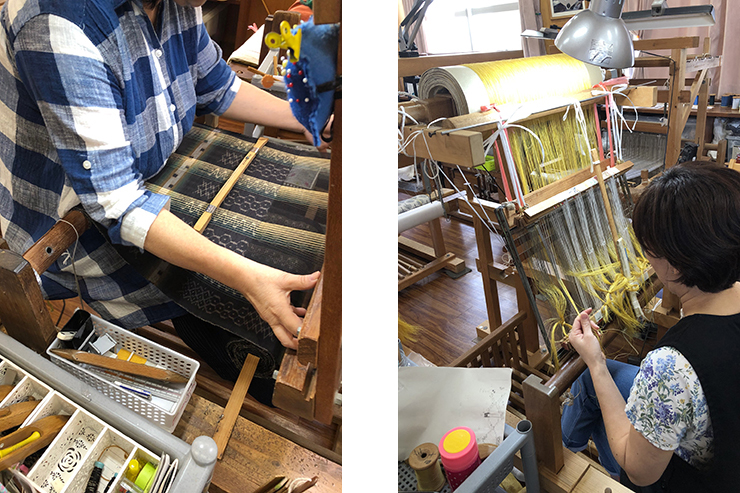
The bark of the common garcinia is used to produce the color of yellow in the colored kasuri. Yellow has been considered as the color for kings and nobles, and were woven into outfits for high-ranking people. It takes two hundred years for a tree of common garcinia to mature enough to be used for dyeing. “The stuff we are using now was prepared by the previous generation. The garcinia trees we are planting now are for the next generation to use.”
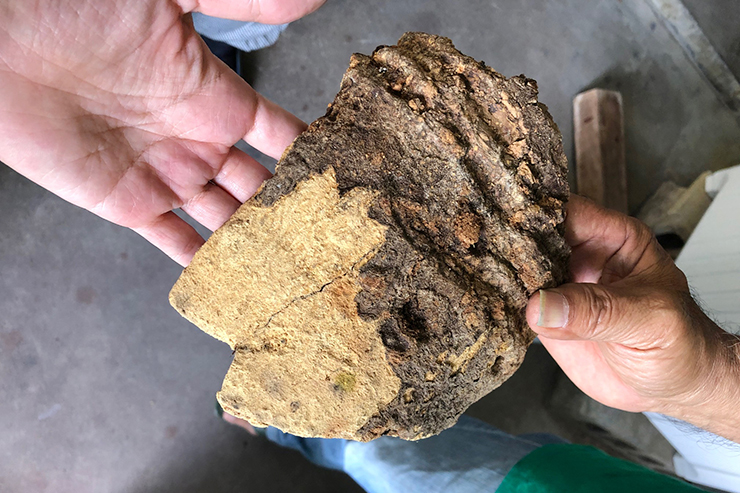
Swallow designs are woven into sheer textile dyed with deep indigo. This is the silk kasuri for early summer. Swallows flying in the textile are a couple. Underneath them is the design of a small stream, above which fireflies flicker. The swallow couple stands for the prosperity of descendants, and the presence of fireflies suggests the high clarity of the river. Through reading into each pattern on kasuri, a whole storybook that depicts a moment in the early summer sunset on the tropical island opens up. The design invites us into the heavenly landscape.


- Textile :
- Aizu Momen
- Textile of Okinawa
- Ryukyu Bingata
- Ryukyu Kasuri
- Yuki Tsumugi
- Old textile
- Dyeing :
- Indigo

